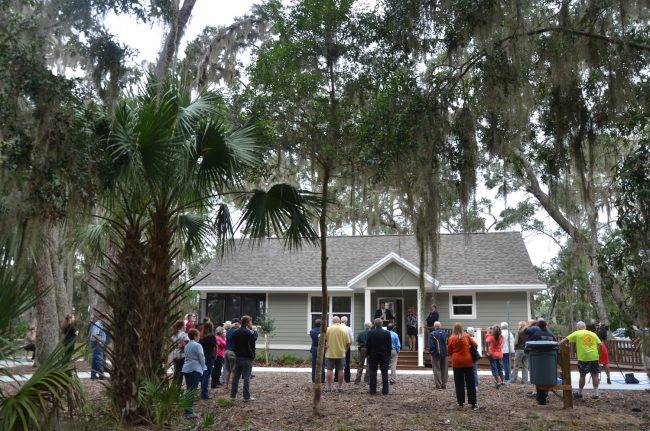
It’s been four years since the Flagler County Commission approved building three air-conditioned tourism “cottages” on pristine waterfront land at the Princess Place Preserve, what would be the first of possibly nine 1,000-square-foot structures at the preserve, and 10 more like them at the River-to-Sea Preserve to be built next year.
Today, three dozen people gathered around one of the buildings to dedicate the trio days before the’re made available to tourists for $125 to $150 a night, placing Flagler County government in the hotelier business: county labor built the structures with funding from federal, state and its own dollars, and the county will use revenue to pay for upkeep, and possibly generate revenue.
“The county manages over 10,000 acres and we’re trying to really look at all those acreages and see how can we make these cool places and unique places that are special to the public at large,” County Administrator Craig Coffey said. “It is unique for the county to do this. There are a few counties in this business, but they’re very few, and sometimes it’s done as a private vendor. We like to maintain control because we think we can maintain quality that way and really make sure it’s accessible.”
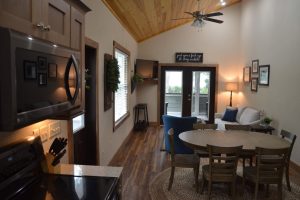
The research division was established in 1999 to study marshes and their surroundings, as Michael Shirley, GTM’s director, explained it. The cottages are designed to house, at least for part of the year, the reserve’s many researchers and graduate students fulfilling its mission: the county is setting aside 420 nights a year from the combined three cottages and one other house at the preserve for use by the reserve’s researchers, at half-price. “If we don’t use them we have enough opportunity to get tourists here,” Shirley said. If the reserve’s researchers use all 420 nights, that leaves over 1,000 for tourists.
“The challenge we have is, how do we protect this area for the economy, for the environment and the species of plants and animals, and for human use? So our mission as we thought about it from a scientific perspective is to protect natural biodiversity,” Shirley said, explaining the purpose of the reserve and its researchers. Simply put, the more natural biodiversity with plant and animals, the more likely it’s to be sustained through hurricanes and “any injury from use,” Shirley said. “So our goal here is to basically protect natural biodiversity and in doing so we protect the ecological and environmental and economical reasons why we’d protect an estuary.”
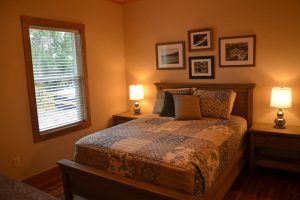
He acknowledged that the cottages almost didn’t happen: The reserve had to compete with 28 other reserves for the money, with the money eventually devoted to Princess Place representing fully a third of the money that was available in the grant pot. “The other thing is there was a big outcry from the community,” he said. “They love Princess Place and they were concerned about the environment. What made the difference in making these cabins, cottages, happen, was that fine-threaded negotiation between tourism and science. We know the science is absolutely essential to protect this area. The unfortunate reality is, sea level is rising, we’re seeing changes in marshes from mangroves, we’re seeing marsh die-offs in parts of the reserve. The solution is going to be coming from scientists to tell us what can we do. We need to monitor these areas.”
But the chief purpose of the cottages is clearly their draw to tourists.
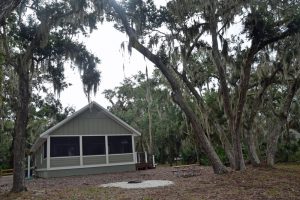
The cottages, designed by Flagler Beach architect Pozzuoli and built by the county’s facilities department under the supervision of Heidi Petito, could possibly make a convert of Thoreau, once concern for the green space and old trees leveled to make way for them–green space and old trees few people would have been able to see except from a boat–is set aside: sitting below gray-shingled roofs and palmetto-green walls, the construction is modest, the rooms charmingly furnished like chalets (one of them handicapped-accessible), but with ready wifi and satellite TV (no slumming it here), each house with its own screened-in porch looking out on nearby water and moss-thickened trees. The silence, when the politician’s speeches were done, was enticing, the isolation irresistible.
The price is surprisingly reasonable.
“What we’re trying to accomplish here is to offer an incredibly unique experience with the incredible resource that we have here,” says Matt Dunn, Flagler’s tourism director, “and also make sure we’re not losing potential visitors to our neighbors to the north and their opportunities, without having more affordable accommodations in the northern part of the county, we know that definitely happens. So possibly that came into their mind when they were doing that.”
According to a 2014 memorandum of understanding, the cottages were paid for through $345,000 from the National Oceanic and Atmospheric Administration (NOAA), $60,000 from GTM, and $120,000 in labor and equipment from Flagler.
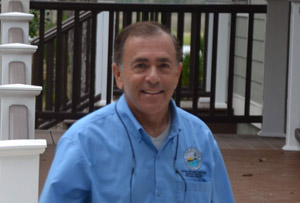
“This is coming at a really great time for the Reserve,” Shirley said. “The Reserve was designated in 1999 out of Marineland, in a county office location, it was the old campground store for the campground there, and we’ll be celebrating in 2019 our 20-year anniversary,” Shirley said. “These cottages will really ramp up our ability to get back to our roots, which is Flagler County. I’m excited about that.”
The 10 a.m. dedication this morning was emceed by County Commission Chairman Greg Hansen, preceding a ribbon-cutting. Afterward, Commissioner Nate McLaughlin, who is to sit through his last meeting this evening–he was defeated by Joe Mullins, who was at the dedication–did what he’s done most often, and most effectively, through his eight years on the commission: he snipped off a segment of red ribbon to add to his collection.
![]()
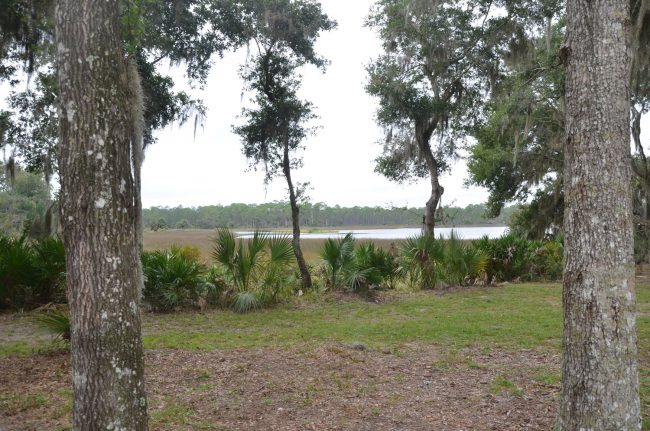





























KJ says
I don’t want to be one of those “nay-sayers” (read as anyone who may challenge his recommendations) Mr. Coffey warns us of but I must ask for some clarification…Mr. Shirley stated …”that for researchers, accessibility to certain points in the region, to do the work, was difficult. The cottages will ease that difficulty. “This is a very remote area to get to,” he explained. “Most folks can’t negotiate the flats at Pellicer Creek, so they can’t drive a boat up here if they’re a graduate student or a professor, first time here, so we needed to have houses here, some on-site facilities.””
How did building the cottages make accessing the area easier to get to? Were new roads put in to get to the cabins? I don’t understand the connection between building cabins and accessibility? Also, most researchers I’ve ever encountered or read about reach far more remote areas than this for their research.
snapperhead says
Where will these researchers, apparently unable to “navigate” local roads, eat? Perhaps we can subsidize a Captain’s BBQ at Princess Place too? I’d like to see a Subway at Betty Stiflik Park as well…what you say King Coffey? I’m sure Dunn can come up with some bloated fictitious ROI numbers to justify it.
Kathy says
Looks like a very nice place. Are they going to be available for people who want to enjoy the park for a few days. Just “regular people” not researchers?
Tax payer says
Something more to maintain and cost the tax payers that only a handful will benefit from. The money didn’t need to be spent on these cottages and this is NOT what I call a cottage. This is not what the purchase of that land was intended for and this craziness needs to stop. It will not stop until Craig Coffey is fired. This is nothing more than a scam and the BOCC needs to wake up. There is nothing wrong with a tent or a motel.
Steve says
To me a B.S. story. You all(Powers that be ) have visions of Grandeur in this County and now from Golf, tennis(which is highly unprofitable) , we the County are in the Hospitality Industry. Jobs are more important, affordable Housing, lighting, infrastructure on and on et al. You all cant even keep the swails draining or the roads maintenanced but The County is going to keep up the quality after tourist come and not only wreck the buildings but the environment. I want some of what you geniuses are smoking. I could go on ad infinitum but its not worth it. SMH